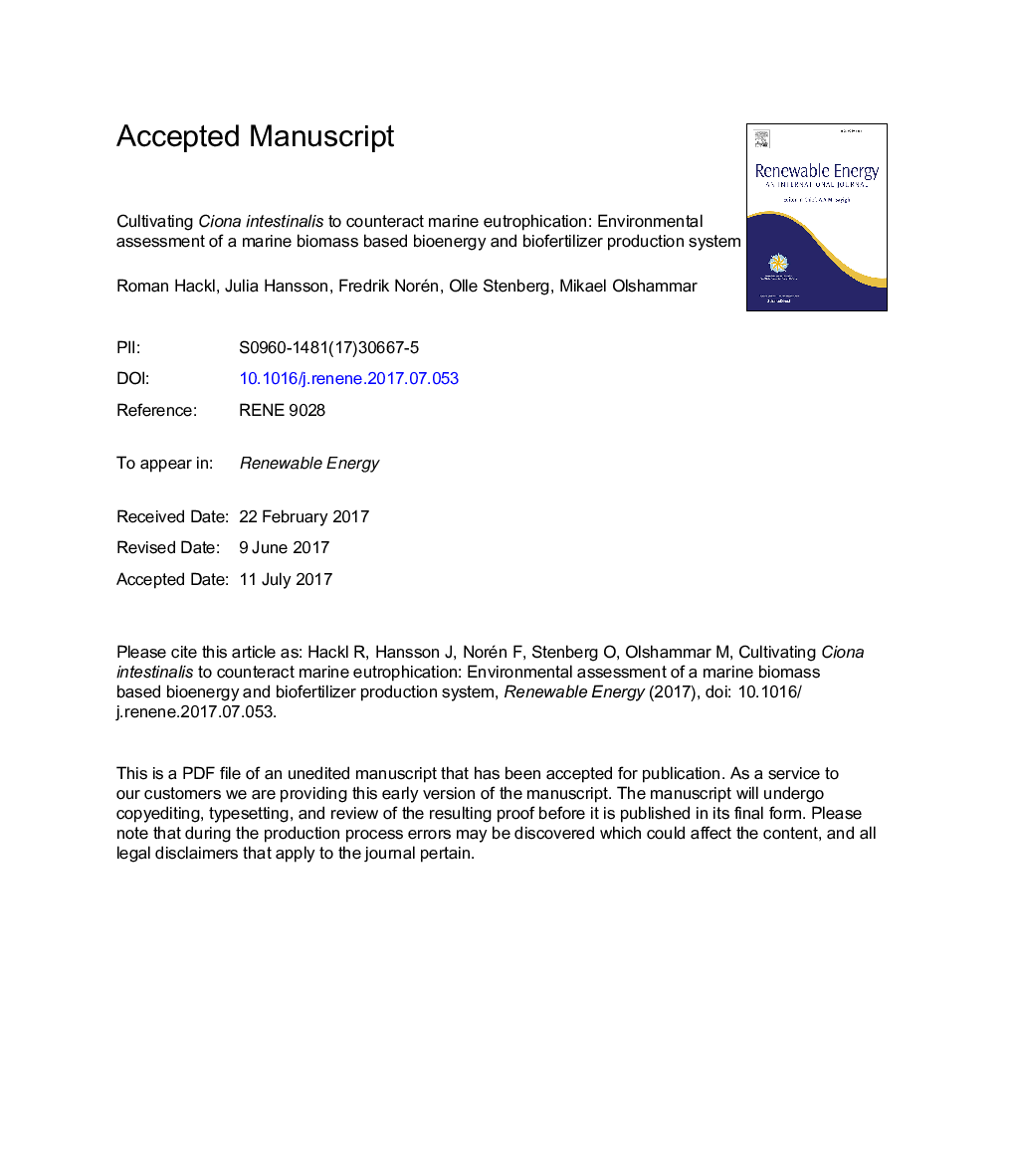| Article ID | Journal | Published Year | Pages | File Type |
|---|---|---|---|---|
| 6764438 | Renewable Energy | 2018 | 23 Pages |
Abstract
In this paper the utilisation of the marine evertebrate organism Ciona intestinalis (tunicata), cultivated in the North Sea and used as feedstock for biogas and biofertilizer production is suggested and assessed. The greenhouse gas (GHG) emissions performance of the concept and it's consequences on marine eutrophication are investigated applying life cycle assessment. Results show that at full scale biogas production from C. intestinalis reduces GHG emissions by more than 65% compared to fossil transportation fuels. In addition, the results show that accounting for the system consequences of other products and services such as biofertilizer replacing mineral fertilizers and decreased marine eutrophication largely increase the environmental benefits provided by the concept. Approx. 3.7 g-Neq/MJbiogas of nitrogen are removed from the marine environment during the cultivation of C. intestinalis.
Related Topics
Physical Sciences and Engineering
Energy
Renewable Energy, Sustainability and the Environment
Authors
Roman Hackl, Julia Hansson, Fredrik Norén, Olle Stenberg, Mikael Olshammar,
